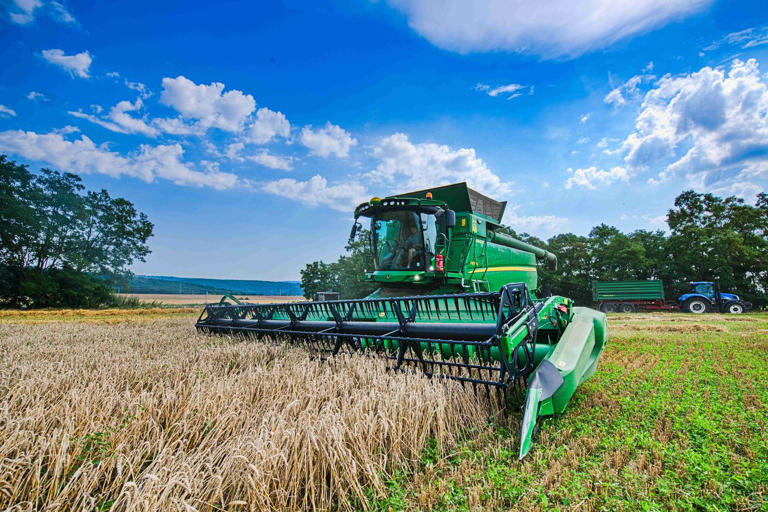The U.S. manufacturing sector is grappling with a significant downturn as companies adjust their strategies in response to a prolonged slump in demand. This challenging environment is shaped by a combination of higher interest rates, escalating operational costs, a strengthening U.S. dollar, and declining commodity prices, which together have dampened factory activity across the nation.
Deere & Co., a global leader in agricultural equipment manufacturing, has notably scaled back its operations in response to these economic pressures. Since November, the company has laid off approximately 2,100 production workers, which constitutes 15% of its hourly workforce. This reduction underscores the broader trend of workforce adjustments across the sector. Similarly, Agco, a prominent competitor in the farm equipment industry, announced in June that it would be cutting 6% of its salaried workforce worldwide, equivalent to about 800 positions, by the end of the year. These layoffs reflect the severe impact of the current economic climate on manufacturing firms, which are striving to remain viable amid weakening demand.
The recreational vehicle (RV) industry is also feeling the effects of this downturn. Polaris, a major player in the RV market, disclosed plans to adjust its production schedules due to a substantial 49% drop in quarterly income. The company reported declines in sales across its motorcycles, boats, and off-road vehicles, attributing this downturn to a pullback in consumer spending on discretionary items. Chief Executive Michael Speetzen highlighted that retail sales have been weaker than anticipated, emphasizing the broader challenges faced by manufacturers in maintaining profitability in a cooling economy.
The current slowdown in manufacturing follows a period of significant growth, particularly during the COVID-19 pandemic. During this time, homebound consumers shifted their spending from services like dining out and entertainment to durable goods such as dishwashers, pickup trucks, and home remodeling projects. This surge in demand, coupled with supply-chain bottlenecks, led to inflation as companies increased orders to compensate for delays and shortages. However, as prices rose, consumer enthusiasm waned, leading to a deceleration in manufacturing activity.
Government spending programs aimed at supporting critical sectors, such as semiconductor manufacturing, electric vehicle (EV) batteries, and power-generating infrastructure, have provided some relief. These initiatives are helping to offset some of the industry weaknesses. Additionally, defense companies continue to experience robust demand for military equipment due to ongoing conflicts in Ukraine and Gaza, which has sustained certain areas of manufacturing.
Economic data paint a mixed picture of the sector’s performance. While increased spending on durable goods contributed to stronger-than-expected economic growth in the U.S. during the second quarter, factory output has shown signs of slowing. For example, steel distributors are witnessing decreased demand, with steel prices falling significantly from previous highs. Jeremy Flack, CEO of Flack Global Metals, reported a notable reduction in demand compared to the previous year, as buyers anticipate further declines in prices.
The agricultural sector has also been affected by the current economic conditions. The U.S. Department of Agriculture predicts a 25% reduction in farm income due to lower commodity prices, which has diminished farmers’ purchasing power. Consequently, sales of high-horsepower farm tractors and harvesters have decreased. Deere has implemented production cuts to manage inventory levels and avoid an oversupply of unsold equipment, a strategy aimed at mitigating the impact of reduced demand.
In the automotive industry, production volumes have declined, particularly for metal stampers like Dayton Rogers Manufacturing, which has seen a one-third reduction in automotive production compared to pre-pandemic levels. Some automakers have slowed their production of electric vehicles in response to weaker-than-expected demand, leading to shifts in investment and production strategies. This adjustment has ripple effects throughout the automotive supply chain.
Global economic conditions are also influencing U.S. manufacturers. For instance, Otis Worldwide, a manufacturer of elevators and escalators, raised its profit outlook but reduced its sales forecast due to decreased demand in China. Additionally, the strengthening U.S. dollar is impacting competitiveness, making foreign imports cheaper and putting domestic manufacturers at a disadvantage. Sohel Sareshwala, president of Accu-Swiss, highlighted that U.S. tariffs drive up material costs, further exacerbating the challenges posed by a strong dollar.
Overall, the manufacturing sector is navigating a complex landscape of economic pressures and shifting demand patterns. As companies adapt their strategies to these evolving conditions, their ability to manage production, workforce, and inventory will be critical in determining their resilience and future performance.
